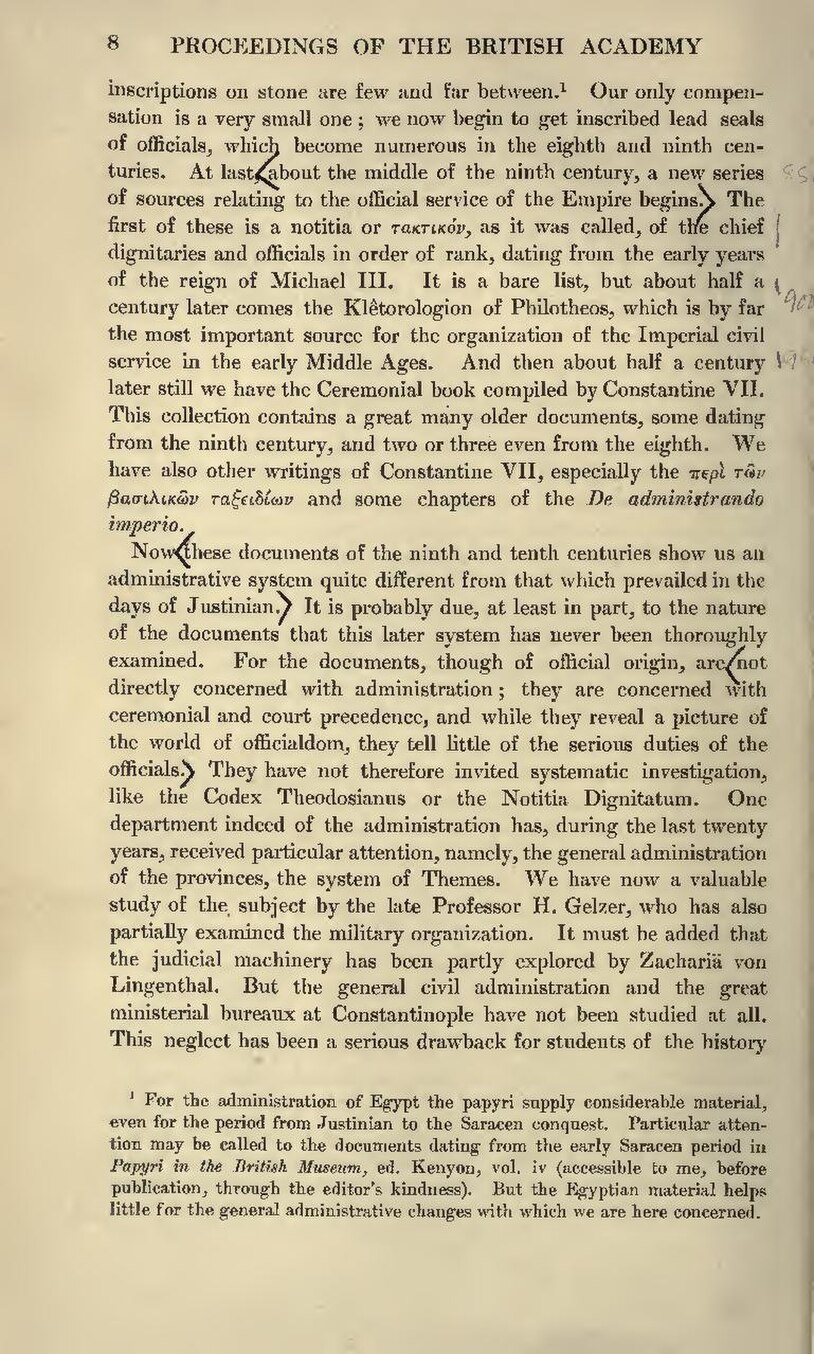inscriptions on stone are few and far between.[1] Our only compensation is a very small one; we now begin to get inscribed lead seals of officials, which become numerous in the eighth and ninth centuries. At last, about the middle of the ninth century, a new series of sources relating to the official service of the Empire begins. The first of these is a notitia or τακτικόν, as it was called, of the chief dignitaries and officials in order of rank, dating from the early years of the reign of Michael III. It is a bare list, but about half a century later comes the Klêtorologion of Philotheos, which is by far the most important source for the organization of the Imperial civil service in the early Middle Ages. And then about half a century later still we have the Ceremonial book compiled by Constantine VII. This collection contains a great many older documents, some dating from the ninth century, and two or three even from the eighth. We have also other writings of Constantine VII, especially the πϵρὶ τω̑ν βασιλικω̑ν ταξϵιδίων and some chapters of the De administrando imperio.
Now these documents of the ninth and tenth centuries show us an administrative system quite different from that which prevailed int eh days of Justinian. It is probably due, at elast in part, to the nature of the documents that this later system has never been thoroughly examined. For the documents, though of official origin, are not directly concerned with administration; they are concerned with ceremonial and court precedence, and while they reveal a picture of the world of officialdom, they tell little of the serious duties of the officials. They have not therefore invited systemic investigation, like the Codex Theodosianus or the Notitia Dignitatum. One department indeed of the administration has, during the last twenty years, received particular attention, namely, the general administration of the provinces, the system of Themes. We have now a valuable study of the subject by the late Professor H. Gelzer, who has also partially examined the military organization. It must be added that the judicial machinery has been partly explored by Zachariä von Lingenthal. But the general civil administration and the great ministerial bureaux at Constantinople have not been studied at all. This neglect has been a serious drawback for students of the history
- ↑ For the administration of Egypt the papyri supply considerable material, even for the period from Justinian to the Saracen conquest. Particular attention may be called to the documents daying from the early Saracen period in Papyri in the British Museum, ed. Kenyon, vol. iv (accessible to me, before publication, through the editor's kindness). but the Egyptian material helps little for the general administrative changes with which we are concerned.
